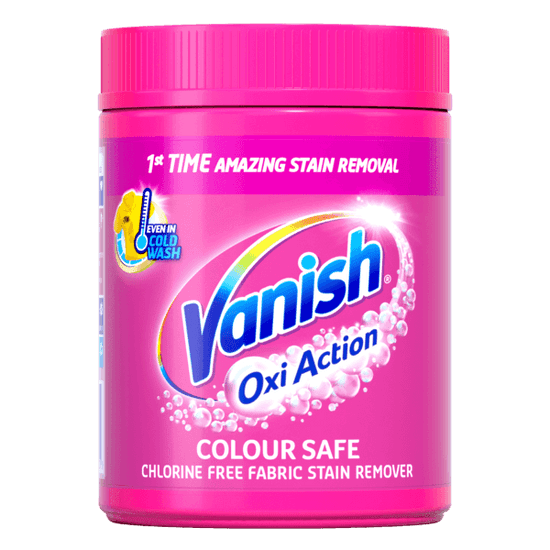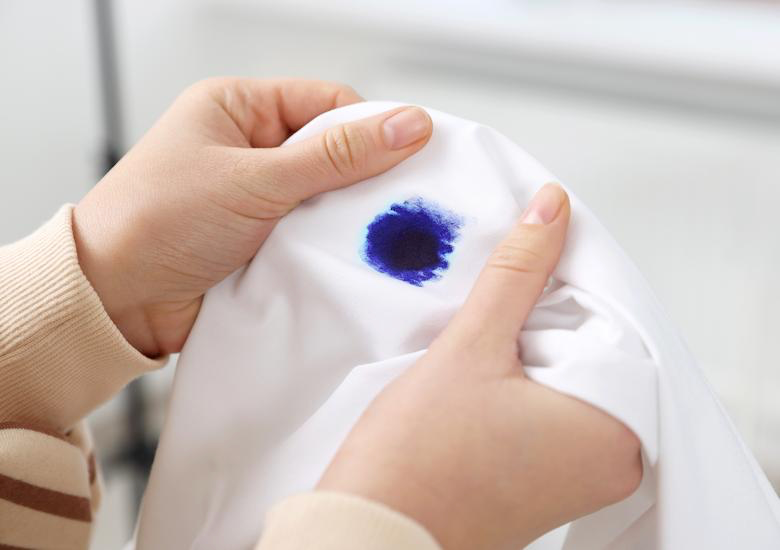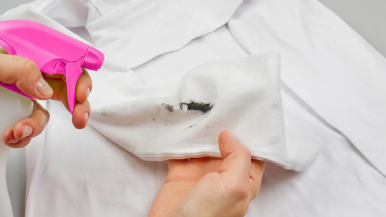OXI ACTION STAIN REMOVER POWDER

Say goodbye to pesky ink stains and keep your garments looking fresh and clean with expert tips from Vanish UK. Read more now!

Accidents happen, but when you don’t know how to remove ink stains it can be a frustrating and common problem – especially if you’ve got kids at school. But fear not, here’s a step-by-step guide on how to remove ink from clothes. Whether you’re wondering how to remove biro from fabric or how to get pen ink out of clothes – we've got you covered.
From assessing the stain to choosing the right cleaning agent, we'll go over everything you need to know as soon as the panic sets in. We've also got some prevention tips to help you avoid future mishaps.
So, if you're ready to get stuck into some ink stain removal, this one’s for you. Let's get started on the journey towards ink-free clothes!
If the ink stain is fresh, it should be easier to treat. However, if it's already dried, don't worry – we’ve got more specific guidance on how to remove pen stains and how to remove pen ink from clothes after drying further down.
When it comes to ink stains on clothes, time is of the essence. Acting quickly can make a big difference, so as soon as you notice an ink stain, it's important to take immediate action. The longer the ink sits on the fabric, the more difficult it can be to remove.
If the ink stain is fresh, start by blotting the area gently with a clean cloth or paper towel to absorb as much ink as possible. Avoid rubbing the stain, as this can spread the ink and make it worse.
Remember to do this as soon as you can to tackle the stain before it settles deeper into the fabric.
Remember, regardless of the cleaning agent you choose, always follow the washing instructions on the product label and test on your garment first.
Simply follow these easy steps:
1. Choose a hidden area of the garment, such as an inside seam or hem.
2. Apply a small amount of the cleaning agent to a clean cloth or cotton ball.
3. Gently dab the cloth or cotton ball onto the test area, making sure not to rub too vigorously.
4. Check the test area for any signs of colour bleeding, fading or damage.
If there are no negative effects on the fabric, you can proceed with applying the cleaning agent to the entire stain. However, if there’s any discolouration or damage, the product is not recommended for that type of fabric and it's best to seek professional help.
1. Rinse the stained area under cold running water. This will help flush out any remaining ink stains and cleaning agents from the fabric.
2. Continue rinsing until the water runs clear and there are no visible traces of ink or cleaning agent.
3. If the stain persists, repeat the previous steps. Apply the cleaning agent again, gently blot the stain and rinse thoroughly.
Remember, patience is key. Usually, some old and dried ink stains may require additional steps to completely remove.
1. Check the care label on the garment to determine the appropriate washing method. Follow the instructions provided to avoid damaging the fabric.
2. If the garment is machine washable, place it in the washing machine and add the recommended amount of laundry detergent and top it with stain remover to boost the detergent's performance in removing stains. Use cold water, as hot water can set the ink stain.
3. If the garment is not machine washable or if the stain is particularly stubborn, consider hand washing. Fill a basin or sink with cold water and add a small amount of laundry detergent and top it with stain remover to boost the detergent's performance in removing stains. Gently agitate the garment in the water, focusing on the stained area.
4. Rinse the garment thoroughly to remove any remaining detergent or ink residue.
5. Finally, allow the garment to air dry. Avoid using a dryer, as heat can set the stain.
1. Gently squeeze out any excess water from the garment. Avoid wringing or twisting, as this can damage the fabric.
2. Lay the garment flat on a clean towel or hang it up to air dry. Avoid using a dryer, as heat can set the stain.
3. Once the garment is dry, inspect it closely. Check for any remaining traces of ink or discolouration. If the stain is still visible, repeat the previous steps or consider seeking professional help.
4. If the stain is completely gone, you can proceed to wear or store the garment as usual.
It's important to note that this should be a last resort, as it can be more costly and time-consuming. However, if the stain is valuable or if you have tried multiple methods without success, it may be your best option.
Remember to communicate the nature of the stain to the cleaner and provide any relevant information, such as the type of ink and fabric. This will help them determine the most appropriate treatment method.
1. Keep pens and markers securely capped when not in use. This will prevent accidental leaks or spills.
2. Avoid placing pens or markers in pockets or near clothing items, especially when they’re uncapped. Keep them in a separate case or holder.
3. Be cautious when using pens or markers around clothing and try to work on a stable surface to minimise the risk of accidental spills.
4. If you have young children, consider using washable markers instead of permanent markers or pens. Washable markers are easier to remove from clothing.
*Successful results are not guaranteed. Always check labels and follow product instructions.

